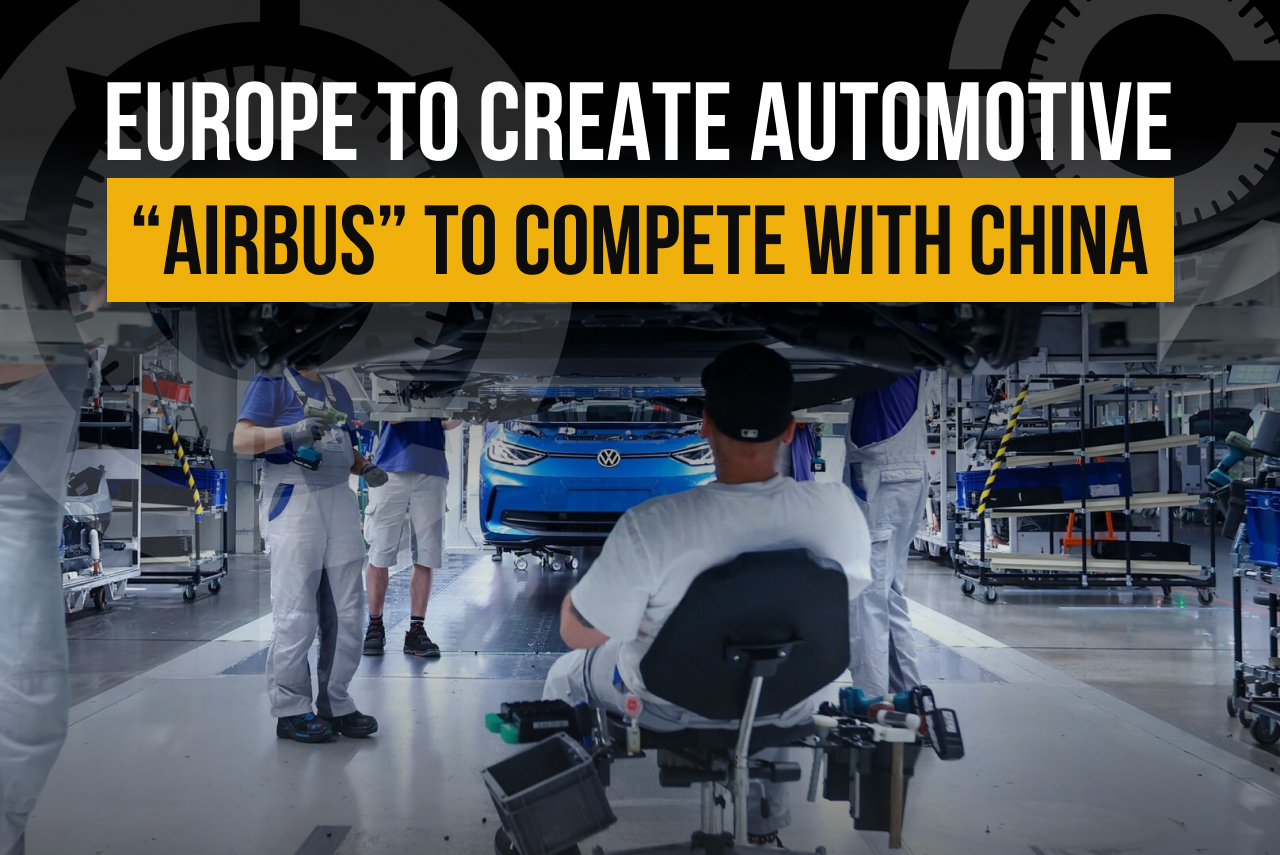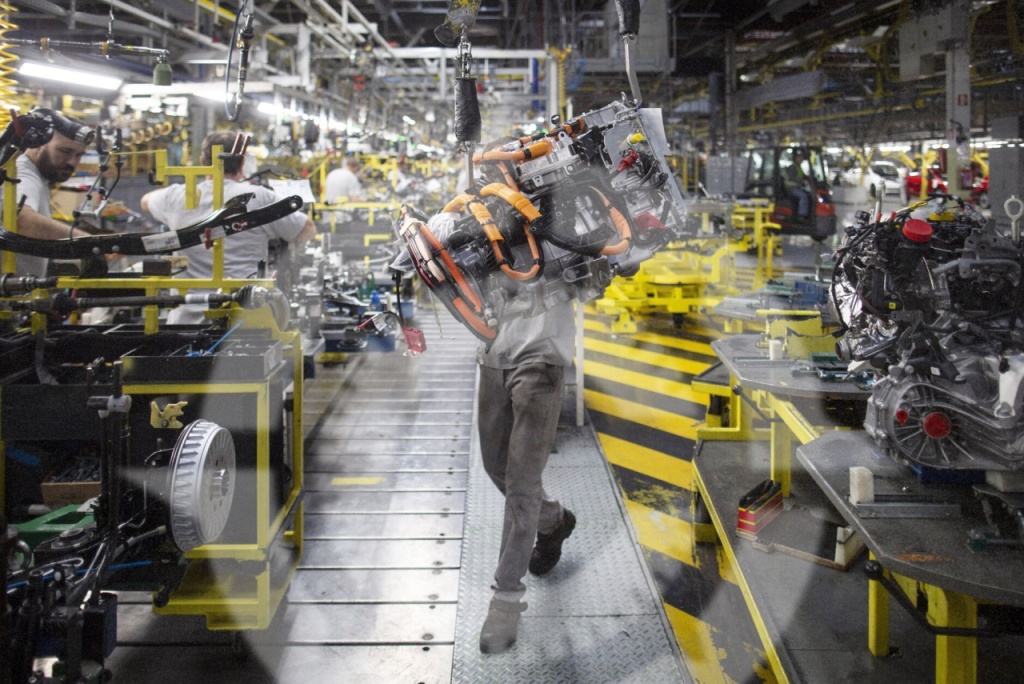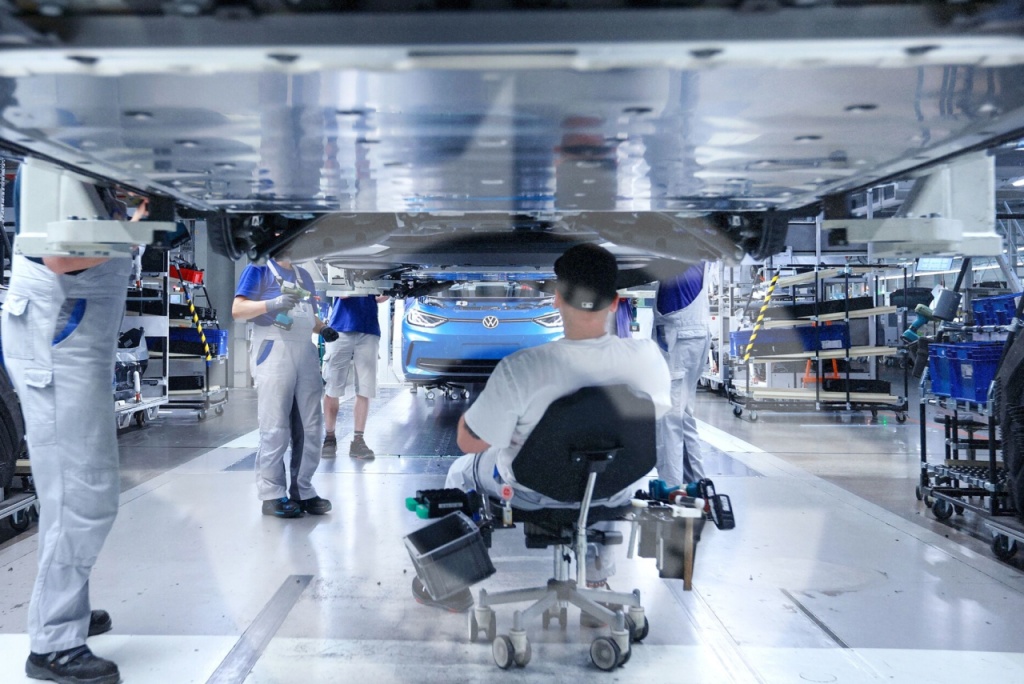Europe to Create Automotive “Airbus” to Compete with China

Volkswagen, Renault and Stellantis are exploring the possibility of close cooperation which will allow them to jointly produce cheap electric vehicles and successfully counter the Chinese economic threat. This union is the only way to survive in competition with the Chinese auto industry, many economists believe.
As Chinese competitors and Tesla reveal the shortcomings of Europe's largest car manufacturers, the Old World is realizing the need to develop new business strategies that can withstand the automotive invasion from the East, Bloomberg notes.

On the eve of the "bloodbath"
Already, “there is an absolute understanding that in the future, companies that are not prepared to compete against China will find themselves in trouble,” says Carlos Tavares, Chief Executive Officer of Stellantis, the company formed in 2021 from the merger of Fiat Chrysler Automobiles (FCA) and the French Groupe PSA.
He previously stated that the European automotive industry would face a “bloodbath” if it failed to adapt to the realities of the global car market. Today, the situation has become even more acute due to the slowdown in the adoption of electric vehicles.
It is impossible to push gas guzzlers out of the market; it is already obvious that EV sales this year will be growing at the slowest pace since 2019.
For Tesla, this slowdown resulted in a 20% drop in shares; at the same time, the company lost $150 billion in market capitalization, which is twice the value of VW.
Competition with China is intensifying the decline in the development dynamics of European auto manufacturers literally before our eyes.

In search of a European answer
In this regard, leaders of European automobile companies are discussing a variety of ideas: from pooling production and research resources to creating joint ventures on other continents. It looks like the European response to China will be announced in the coming months.
But finding a formula for success against the backdrop of declining incentives for buyers/manufacturers is extremely difficult. The situation is aggravated by the policies of rental companies abandoning EVs due to a sharp increase in repair costs, as well as the behavior of consumers who are increasingly frustrated by climate policies affecting their wallets.
Elections in the US and Europe could further fuel opposition to electric vehicles.
Keep in mind that EU’s stricter emission standards will come into force in 2025. Manufacturers will have to sell more battery-powered cars or face financial penalties.
In a worst-case scenario, Volkswagen AG could face a fine of over €2 billion ($2.2 billion), according to Bloomberg calculations based on regulatory data.
Meanwhile, state-backed Chinese manufacturers are entering the market with cars that are cheaper and often better than European ones in a number of ways.
BYD's Dolphin, for example, costs around €7,000 less than the similarly equipped VW ID.3, which the German automaker initially positioned as the "Beetle of the EV age."
The Chinese manufacturer confirmed its European ambitions by showcasing several electric models at the recent Geneva Motor Show, including a luxury SUV aimed at taking on the Mercedes-Benz G-Class.
The failure of European automakers to develop a workable Plan B could lead to turmoil in the industry. This is a serious threat since the automobile industry employs about 13 million people, accounting for 7% of the EU economy.
“We have spent billions to make electric mobility possible,” says Holger Klein, CEO of ZF Friedrichshafen AG, a German parts maker that employs about 165,000 people worldwide. “But now the question is: have we been shown the right path?”
Automotive Airbus
Renault SA CEO Luca de Meo is advocating an alliance similar to the one that created the European aircraft maker, combining assets from Germany, France, Spain and Britain to compete with Boeing.
He argues that the "Automotive Airbus" will help share the huge costs of creating low-cost electric vehicles while benefiting from large-scale trade.
Interest in cost sharing grew late last year when Renault unveiled a concept for an electric city car that would cost less than €20,000 — half the price of the VW ID.3.
De Meo's brainchild is inspired by K-cars. These popular mini cars are made in Japan by several manufacturers and are supported by government incentives.
Stellantis' Tavares openly discusses mergers and acquisitions. Leaders at other companies are focusing on less complex forms of collaboration.
Renault's De Meo confirmed last week that talks on a joint EV platform were taking place all around.
“We are open to proposals and investment because it is very difficult to make money on small cars,” says de Meo, who previously worked for both Volkswagen and Fiat.
The Chinese “auto virus” that is plaguing Europe may spread to the United States, where General Motors and Ford Motor are also reducing investments in the EV industry and have already announced that they are open to partnership.
Moreover, President Joe Biden’s administration is considering the possibility of giving manufacturers more time to switch to the production of electric vehicles, as recently reported by the New York Times.

Volkswagen’s Zwickau flop
By scaling back investment plans, automakers paid out more money to shareholders. GM, Ford and Stellantis spent a combined $22.7 billion on share buybacks and dividends last year, and last week, Renault offered its biggest payout to shareholders in five years. Thus, the problem is not a lack of resources, but poor investment climate.
There are a number of reasons that are dampening sentiment towards electric vehicles. Consumers got buggy software and unexpectedly high operating costs. Due to the complexity of maintenance, insuring an electric car costs more than a conventional car - twice as much in the UK, for instance. But the main problem is how accessible EVs are. Or rather, how inaccessible they are to the mass buyer.
The discrepancy between expectations and reality hurts. Volkswagen has laid off more than 200 workers at its EV production center in Zwickau and reduced shifts at one of its assembly lines. Although overall passenger car sales in Europe rose by 11% in January, analysts expect electric vehicles' share of the overall auto industry pie to decline this year due to consumer apathy.
Talks on the joint production of electric vehicles could prove decisive for Volkswagen, as the auto giant struggles despite its huge investments.
VW has unveiled perhaps its most ambitious EV project under CEO Herbert Diess but software bugs delayed the release of key models which resulted in Diess’ firing in 2022.
His successor, Oliver Blume, told VW workers to prepare for layoffs.
If European automakers fail to get their development strategy back on track, they risk falling behind forever.
Europe's last chance?
Perhaps this is Europe’s last chance, Bloomberg writes.
VW, Stellantis and Renault are independently working on models priced at €25,000 or below, while Mercedes and BMW plan to launch several new electric vehicles with improved technology by the middle of the decade.
Strengthening trade and regulatory protection can help them succeed. The EU must reconsider its plans to phase out conventional cars. Manufacturers are already preparing a coordinated lobbying effort for necessary solutions after European Parliament elections in June, according to people familiar with the matter.
At the same time, the European Commission is investigating the extent to which China has supported its electric vehicle industry, which could lead to the introduction of additional tariffs on Chinese cars as early as July.
While delaying the end of production of ICE cars may provide respite, it will not solve the competition problems that are stalling Europe's transition to the electric age.
“That's why there is a lot of nervousness in the boardrooms of European car companies,” says Alexandre Marian, managing director of AlixPartners, Paris.
Sources: Bloomberg.com, Nytimes.com
Help in the service




















